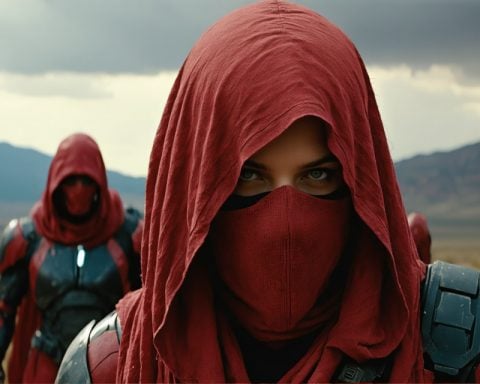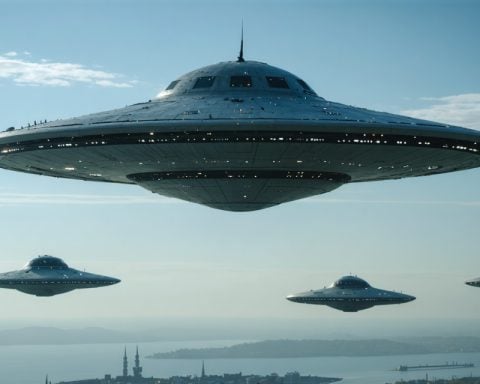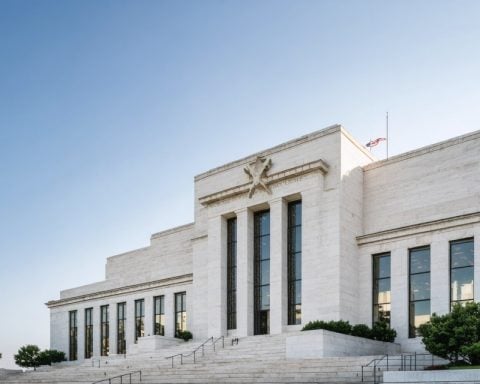- Bob Taylor’s trousers are a key artifact from Scotland’s most famous UFO incident in 1979.
- The trousers were damaged during his encounter with a mysterious dome-shaped craft.
- Paranormal investigator Malcolm Robinson is dedicated to preserving the trousers as a vital piece of folklore.
- The trousers were rejected by the National Museums of Scotland, highlighting a struggle for recognition.
- Robinson has turned down significant offers from collectors to keep the trousers in Scotland.
- His efforts aim to ensure that future generations can learn about this intriguing event in history.
- The case raises questions about the importance of preserving and acknowledging unexplained phenomena in our heritage.
Discover the captivating tale of a peculiar pair of trousers that served as evidence in Scotland’s most famous UFO incident. Paranormal investigator Malcolm Robinson is on a mission to honor folklore and history by preserving a unique artifact: the ripped trousers worn by Bob Taylor during his bizarre encounter in 1979.
Picture the scene: in the serene Dechmont Woods, Bob—and devoutly sober churchgoer—witnessed mysterious, dome-shaped craft descending from the sky. Startled, he felt metal spikes latch onto his trousers before waking up disheveled and bewildered. The ensuing police investigation uncovered unusual markings on the ground, leaving detectives puzzled and intrigued.
Yet when Robinson offered these iconic trousers to the National Museums of Scotland, he faced rejection. Despite their historical significance, officials claimed they already had similar items. Robinson was devastated, calling the trousers a vital piece of Scotland’s UFO legacy, deserving a place in national history.
For decades, Robinson has safeguarded this emblem of mystery, even turning down hefty offers from collectors eager to take them abroad. His goal is clear: to ensure that future generations can witness and learn from this remarkable chapter in Scotland’s unexplained events.
As he passionately advocates for preserving this emblem of intrigue, the key takeaway echoes clearly: sometimes, the remnants of our world’s mysteries deserve recognition and a home where stories can thrive. What more hidden truths does our history hold?
Unveiling the Enigma: The Untold Secrets of Scotland’s UFO Trousers
The Tale of Bob Taylor’s Trousers and Their Historical Significance
In 1979, Bob Taylor’s extraordinary encounter with an unidentified flying object in Dechmont Woods changed the narrative around UFO incidents in Scotland forever. Taylor was not just an average witness; he was a credible churchgoer, making his claims all the more compelling. The subsequent discovery of his ripped trousers played a crucial role in the investigation, fueling interest in this mysterious event.
Despite the initial police inquiries and the subsequent media frenzy, the legacy of Taylor’s trousers extends beyond mere folklore. These trousers encapsulate a time when the world was increasingly fascinated by extraterrestrial life. The unusual circumstances surrounding the event—marked by metal spikes and unexplained ground markings—have sparked numerous theories and discussions regarding their implications.
Key Aspects of the Trousers and the Incident
– Condition and Preservation: The trousers, now a physical representation of the incident, are in a delicate state. Preservation is a crucial aspect of keeping historical artifacts alive for future generations.
– Cultural Impact: This story has contributed significantly to Scotland’s rich tapestry of folklore and has inspired both amateur and professional investigators to delve deeper into unexplained phenomena.
– Historical Context: The incident is part of a broader narrative in the late 20th century when UFO sightings peaked globally, indicating a strong public intrigue in the concept of extraterrestrial visitors.
Closing the Gap: Questions for Deeper Insight
1. What are the implications of preserving historic UFO-related artifacts like the trousers?
Preserving such artifacts plays a pivotal role in cultural heritage. They serve as tangible evidence, enabling future generations to explore and understand societal beliefs about the unexplained phenomena of their time.
2. Why was the offer to National Museums of Scotland rejected?
The rejection by the National Museums of Scotland hinged on the argument that they already possessed similar artifacts. This raises questions about the criteria used for the preservation of unique items and their significance in representing Scottish history.
3. How has public interest in UFOs evolved since the 1970s?
Public interest in UFOs has experienced fluctuations, with notable spikes during significant sighting events or televised hearings about extraterrestrial phenomena. The advent of digital media has also broadened the conversation, allowing for global sharing and discussion of such mysteries.
Additional Insights and Trends
– Market Analysis: The niche market for UFO memorabilia continues to grow. Items like Taylor’s trousers can fetch high prices among collectors, underlining the public’s enduring fascination with unexplained occurrences.
– Sustainability in Artifacts: The effort to preserve such items speaks to a larger trend in museums and conservation efforts that emphasize sustainability and responsible curation of historical artifacts.
– Innovations in Preservation Techniques: As technology advances, new methods in artifact preservation become available, allowing for improved techniques that could help protect items like Bob Taylor’s trousers for future exhibit.
For more exciting stories on UFO phenomena, visit Scotsman for insights and updates.



















